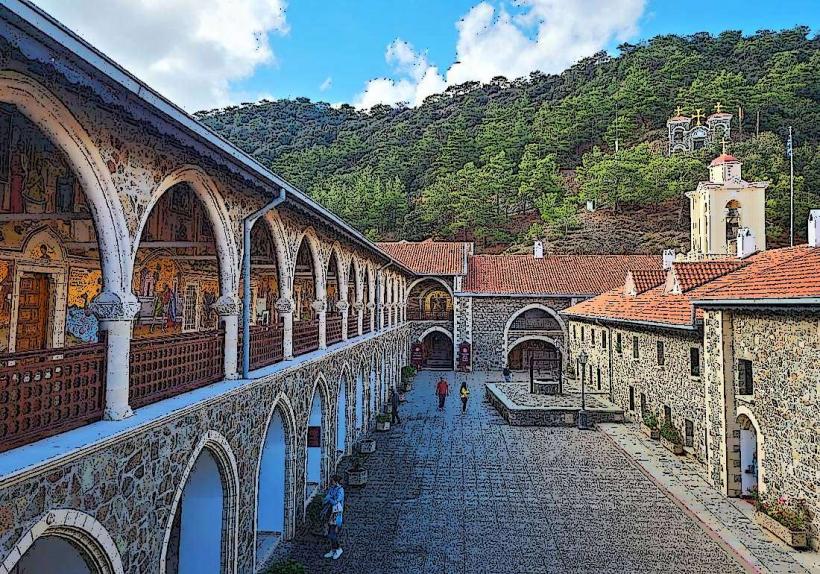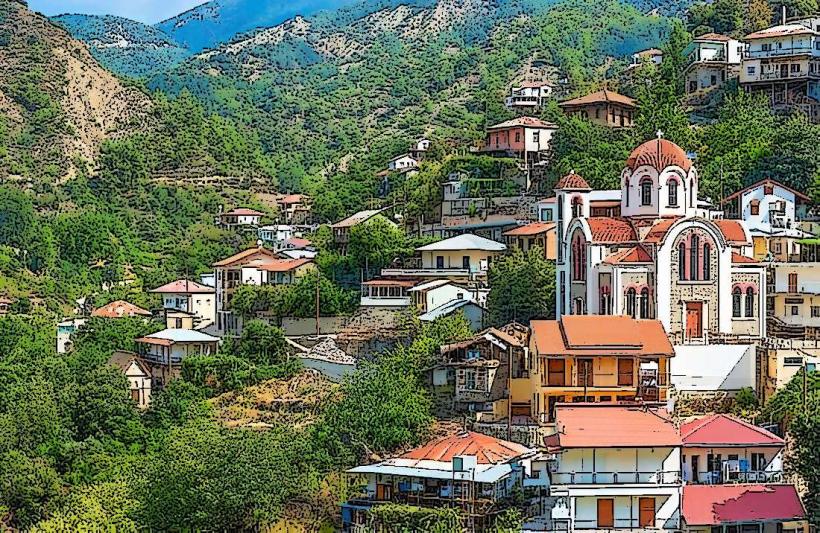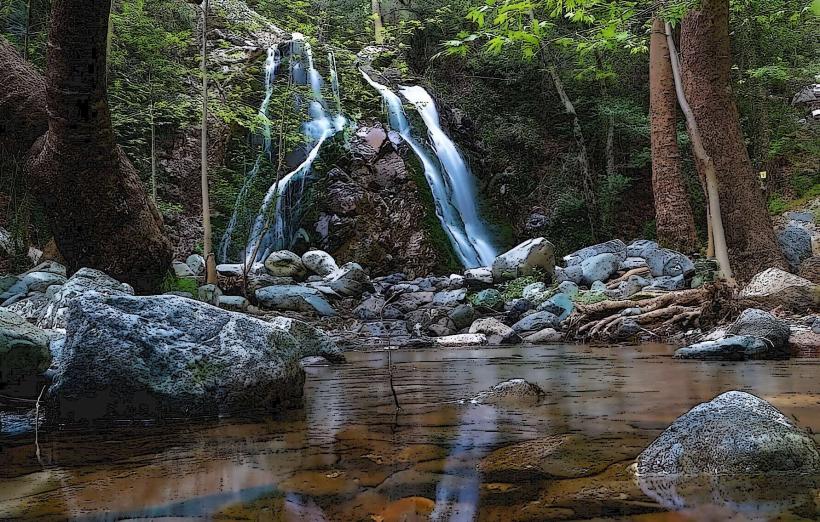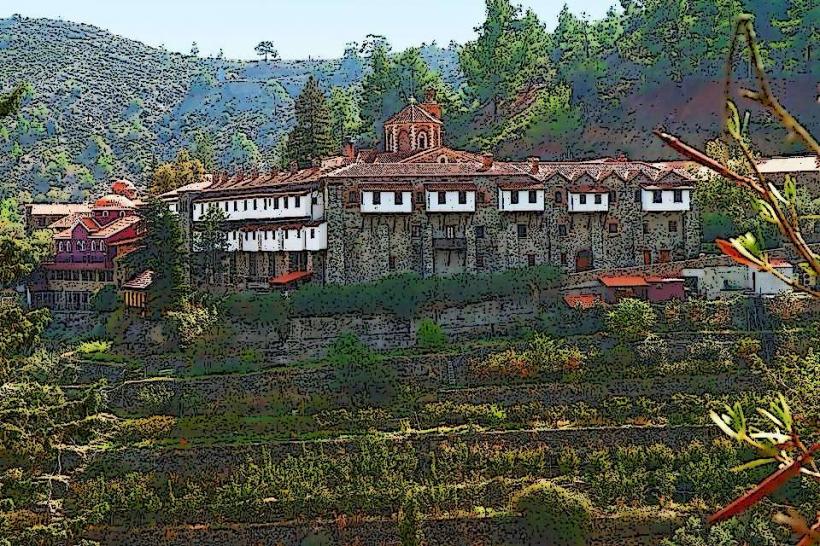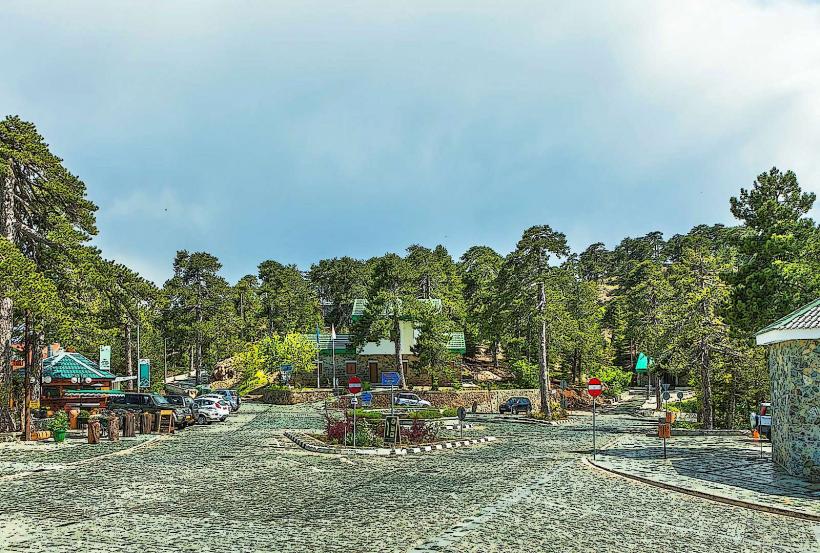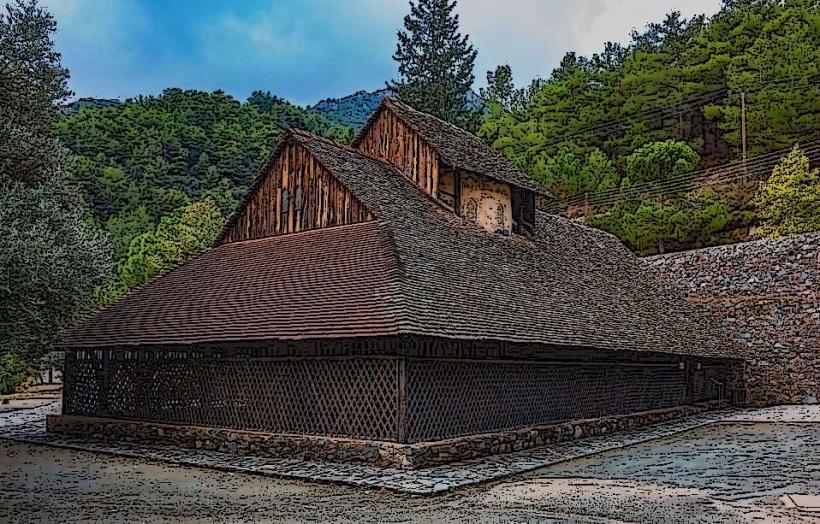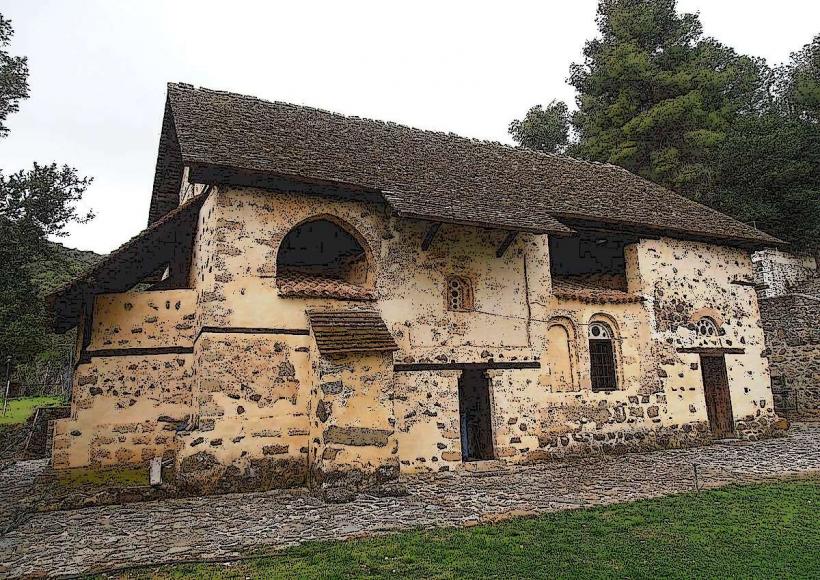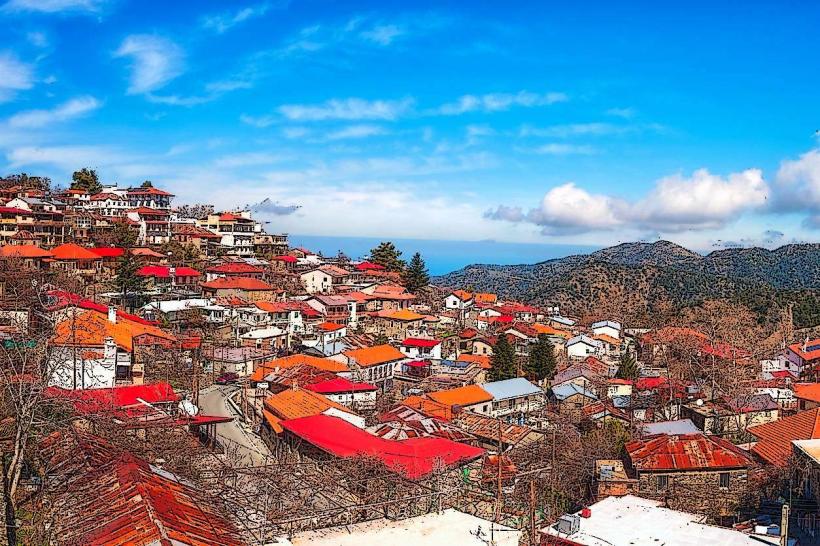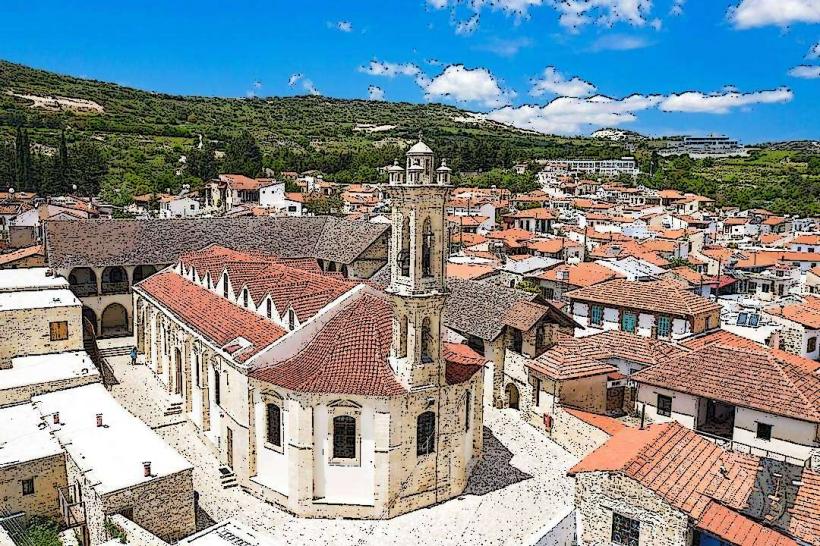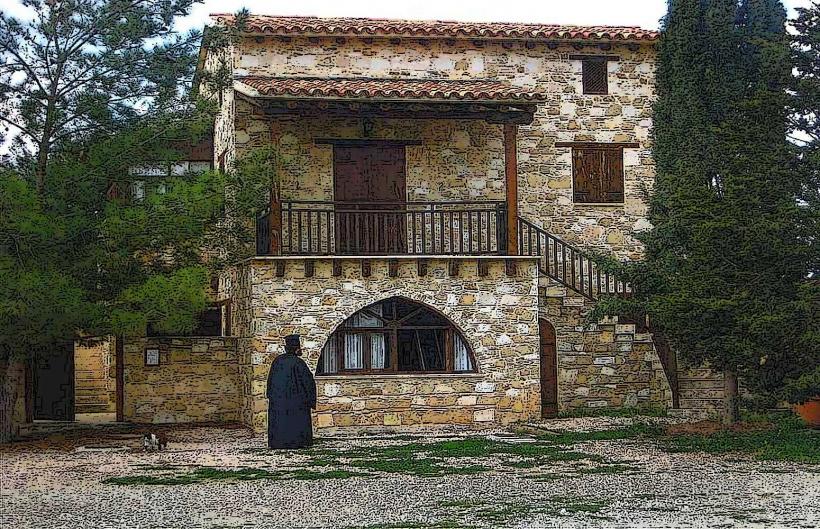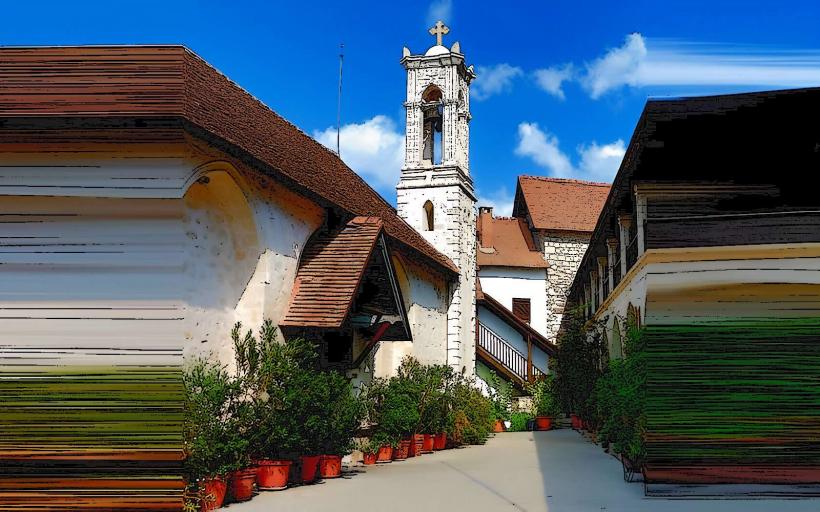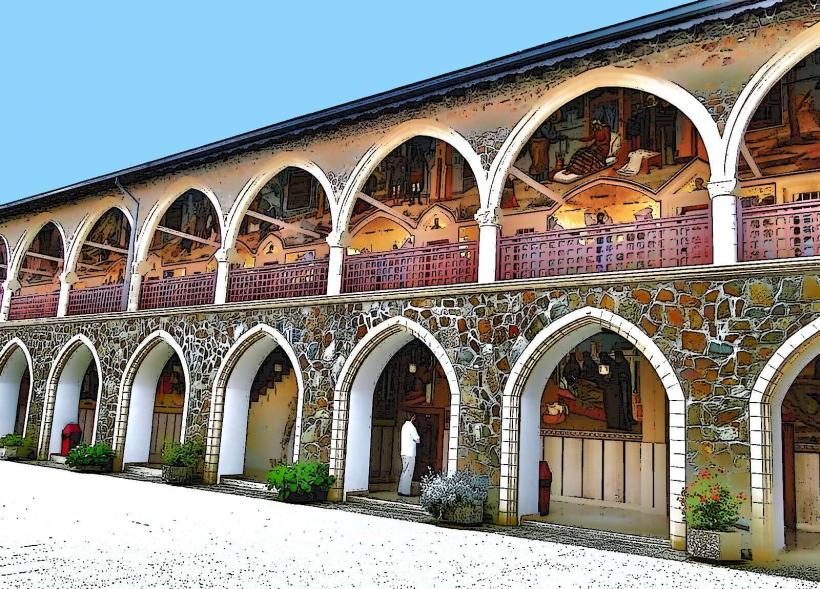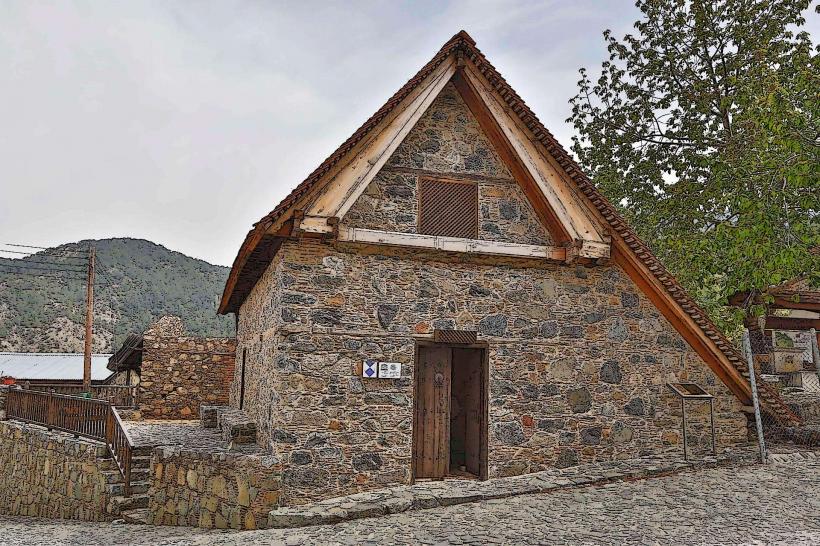Information
Landmark: Troodos National Forest ParkCity: Troodos
Country: Cyprus
Continent: Europe
Troodos National Forest Park is a significant protected area located in the heart of the Troodos Mountains in Cyprus. It is a designated area that encompasses a large portion of the mountain range, known for its natural beauty, diverse wildlife, rich flora, and recreational opportunities. Here is a detailed overview of Troodos National Forest Park:
1. Location and Size
- Geographical Setting: Troodos National Forest Park is located in the central part of Cyprus, covering parts of the Troodos Mountains, which are the island’s largest mountain range. The park spans approximately 9,000 hectares (22,200 acres) and includes some of the highest peaks in Cyprus, including Mount Olympus (1,952 meters / 6,407 feet), the highest point on the island.
- Accessibility: The park is easily accessible by car from nearby towns such as Troodos Square, Platres, and Kakopetria, and it is a popular destination for nature lovers, hikers, and tourists interested in outdoor activities.
2. Flora and Fauna
- Vegetation: The park is home to a rich variety of flora, including dense forests of pine, cedar, and cypress trees. The high altitudes and varied terrain provide a range of ecosystems, from wooded slopes to alpine meadows. In addition to the dominant pine forests, the park also features areas with oak trees, chestnut groves, and wildflowers, especially during the spring and summer months.
- The park is known for its endemic plant species, such as the Troodos iris (Iris troodica), which is unique to the Troodos region.
- Wildlife: Troodos National Forest Park is home to a variety of wildlife, including species of birds, mammals, reptiles, and insects. Notable species include:
- Cypriot mouflon (wild sheep), which are an endangered species found in the park.
- Wild boar, foxes, and cypriot hares can also be spotted in the park.
- A variety of bird species, including raptors like the Eurasian griffon vulture and buzzards, can be seen soaring over the forested hills.
- The park is a significant bird-watching destination.
3. Hiking and Trails
- Hiking Trails: The park is known for its network of well-maintained hiking trails, offering visitors the opportunity to explore its diverse landscapes, picturesque views, and natural beauty. There are over 20 kilometers (12 miles) of marked trails suitable for hikers of all levels, from easy walks to more challenging routes.
- Adonis Trail: One of the most popular hiking routes, the Adonis Trail (7 kilometers long) takes hikers through pine forests and past breathtaking viewpoints, offering panoramic views of the Troodos Mountains and the surrounding valleys. It is considered moderate in difficulty.
- Atalanti Trail: Another popular trail, the Atalanti Trail (14 kilometers long), offers a longer and more challenging route with views of Mount Olympus and the surrounding areas.
- Caledonia Trail: This trail leads to the Caledonia Waterfalls, passing through lush greenery and offering scenic views of the mountain landscape.
- Signage: The park has clearly marked signs that guide visitors along the trails, making it easier for hikers to navigate. Information boards along the paths offer details about the local flora, fauna, and historical significance of the park.
4. Recreational Activities
- Picnicking and Relaxation: There are several designated picnic areas within Troodos National Forest Park where visitors can relax and enjoy the surrounding natural beauty. These areas are equipped with tables, benches, and trash bins, making them perfect for a meal surrounded by nature.
- Cycling: The park also offers some mountain biking trails, catering to cyclists who enjoy exploring the region’s rugged terrain. Cyclists can enjoy the scenic routes while navigating the forest paths and hills.
- Skiing and Winter Sports: In winter, the Troodos Mountains become a hub for winter sports enthusiasts, especially at the nearby Troodos Ski Resort, located just a short distance from the park. The park's high altitude and snowy slopes make it a great base for skiing, snowboarding, and other winter activities during the colder months.
5. Flora and Fauna Conservation
- Protection and Preservation: Troodos National Forest Park is an important protected area under Cyprus’ National Forests Law, designed to conserve the island's biodiversity. The park plays a crucial role in the preservation of native and endemic plant and animal species.
- Wildlife Protection: Efforts are made to safeguard the park's wildlife, especially rare and endangered species like the Cypriot mouflon. Monitoring and research programs are conducted to ensure that the park’s ecosystems remain healthy and resilient to environmental threats.
6. Cultural and Historical Significance
- Byzantine Heritage: The park is not only rich in natural beauty but also in cultural heritage. It is located near several important Byzantine churches that are UNESCO World Heritage Sites, including the Church of Panagia tou Araka and Church of Agios Nikolaos tis Stegis. These churches are renowned for their medieval frescoes and architectural significance.
- Historical Trails: Some hiking trails in the park pass by historical sites, providing visitors with insight into the island's long history, from ancient times to the Byzantine era.
7. Visitor Facilities
- Visitor Centers: There are visitor centers located near the park, such as the Troodos Environmental Information Centre, where visitors can learn about the natural and cultural history of the area through exhibits and interactive displays.
- Signposts and Information Boards: The park has well-maintained signage and information boards in several locations, providing details about the local wildlife, plants, and hiking routes.
- Accommodation: While there are no accommodations directly within the park, nearby villages like Platres and Kakopetria offer a range of hotels, guesthouses, and holiday homes. Visitors can stay in these nearby towns while exploring the park.
- Parking: There are designated parking areas near major trailheads and points of interest, making it easy for visitors to access the park.
8. Best Time to Visit
- Spring and Autumn: These are ideal seasons to visit Troodos National Forest Park, as the weather is mild and the landscape is at its most vibrant, with wildflowers blooming in spring and the autumn foliage offering stunning colors.
- Summer: While summer can be hot in the lowlands, Troodos provides a cooler alternative with its higher altitude. The temperatures are much more comfortable for hiking and outdoor activities.
- Winter: For winter sports enthusiasts, the colder months offer the opportunity to enjoy skiing, snowboarding, and the snowy landscapes of the park. However, some trails may be closed during this time due to snow.
9. Conclusion
Troodos National Forest Park is a stunning and diverse natural gem in the heart of Cyprus, offering a wide range of activities for outdoor enthusiasts, nature lovers, and those interested in exploring the island’s biodiversity. Whether hiking through pine forests, admiring alpine flowers, or enjoying the view from a mountaintop, the park is a must-visit destination for anyone seeking to experience the natural beauty and tranquility of Cyprus.

